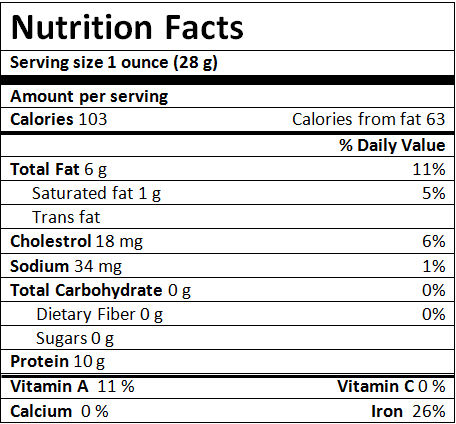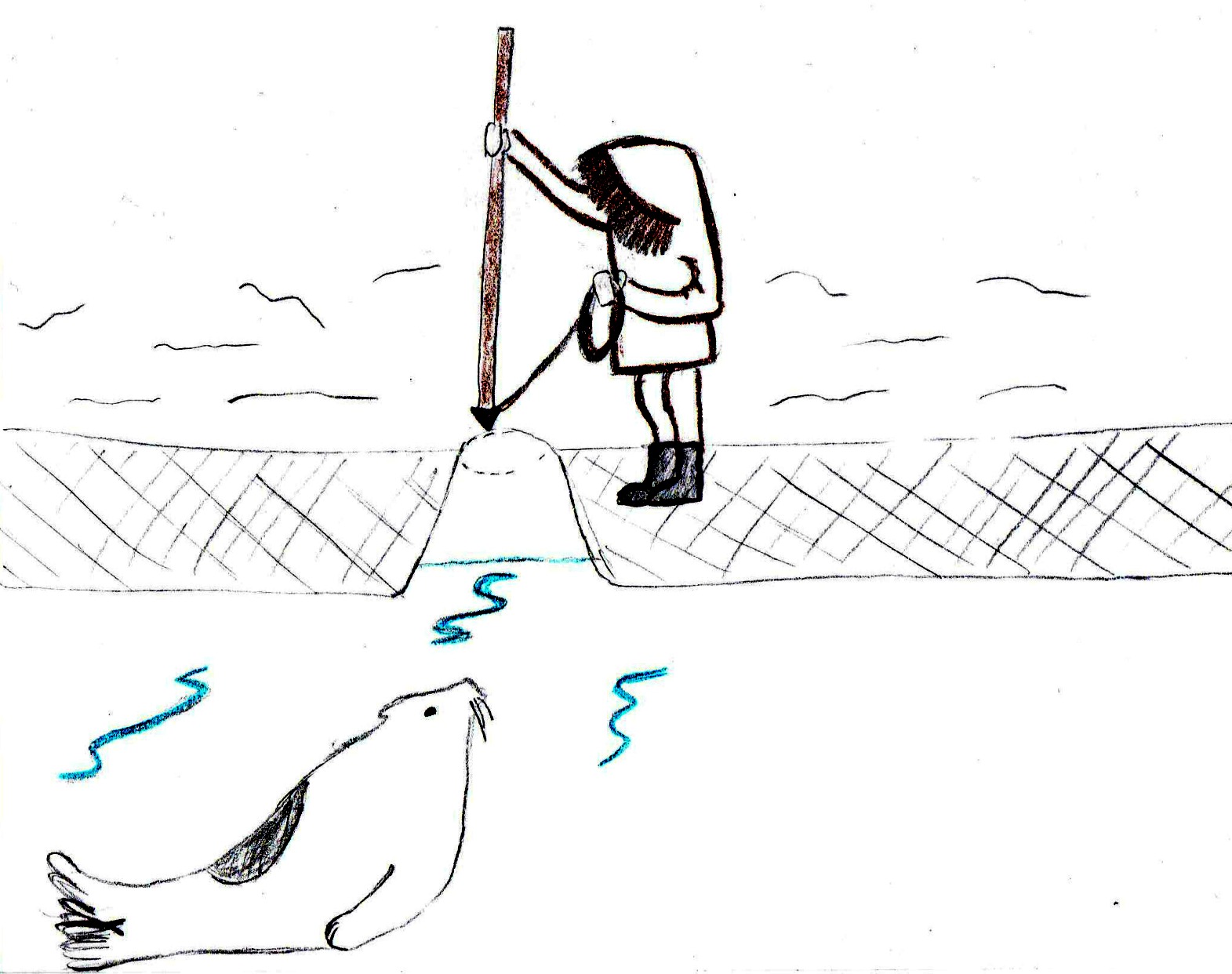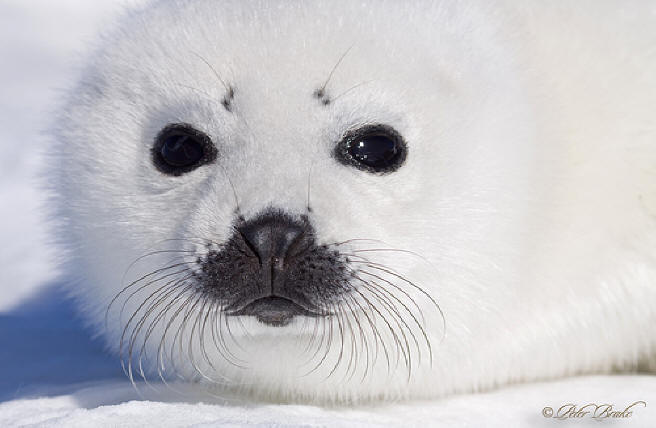Nutrition
Nutrient sources for the harp seal
The diet of a harp seal is anything but routine. Depending on
what is available they will eat anything from polar, arctic, and
atlantic
cod,
herring, sculpin, capelin, plaice, Greenland
halibut, or
redfish; not to mention the crustaceans they feed on such as
shrimp, krill, and prawns.
Harp seals have relatively long intestines compared to minke
whales eating a comparable diet. (To see the advantages of a
longer intestine go to the ADAPTATIONS
page.) These marine animals routinely dive
100 meters to get their supply of nutrients, and even further if
there is a need.
Harp seals as a nutrient source
Inuit people have hunted harp seals for a very long time. (If
you would like to learn more about the hunt, go to the
INTERACTIONS page.) In the arctic there are not many sources of food for the people, so it
is not unusual that they have used the seals as their main
source of food. After hunting the seals there were a few ways
they could prepare the meat. The first was to cook it and eat it
fresh right then, however this was not a practical way to
prepare the meat due to the lack of much storage of fuel for cooking. Another
way they prepared it was by drying it out. This was very common
because the meat could last a long time in this form. They also
sometimes froze the meat to save it for later, however the most
common way the people ate seal meat was raw.
Harp Seal Meat Nutrition Facts
Harp Seal Meat

Photo provided by: Kim Hansen
"Seal flipper pie as usually prepared
is one of the worst things I have ever put in my mouth. Imagine
dog legs frozen in open air, tossed into the bottom of a boat,
stored in a freezer for months, cleaned to get rid of residual
fat, and baked in a pot pie. I’ve had edible pie exactly once in
25 years, done by a grad student from a freshly-killed animal
without freezing. Still tastes fishy. I’ll take a turkey pot pie
any day." Dr. Steven M. Carr
The Inuit people also utilized the rest of
the harp seal. They used the blubber, skin, and bones to make
tools, clothing, tents, boat material, lines for their harpoons
and fuel. Below on the left, you can see a photo of a seal
intestine being used to make a rain coat. On the right you can
see a typical way that these seals were hunted in the past.

To continue your discovery of the interesting facts about harp seals,
follow this link!
FACTS
